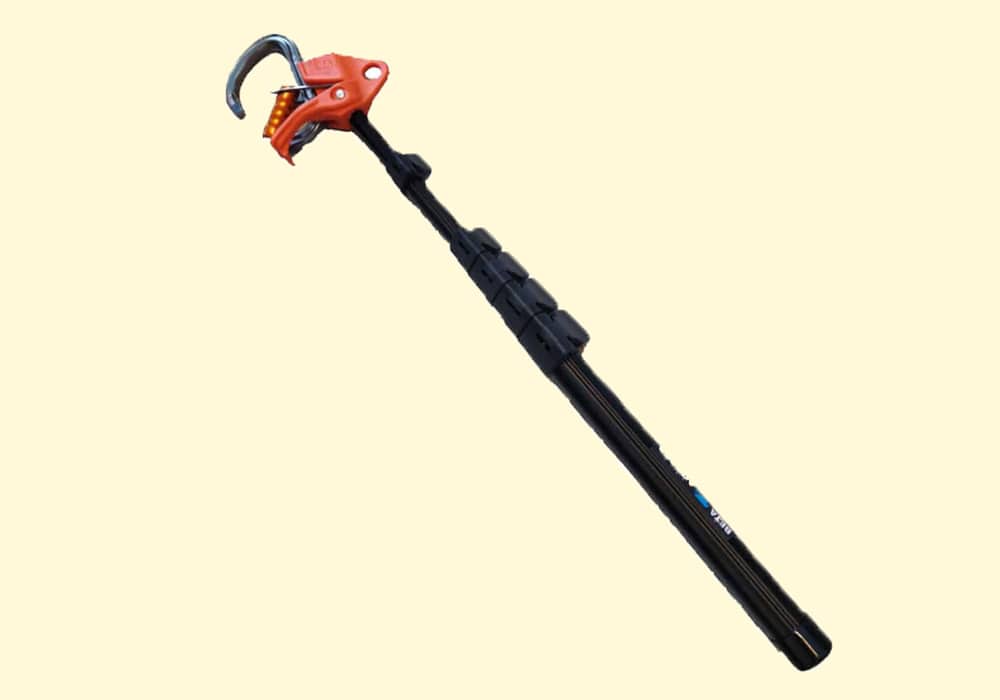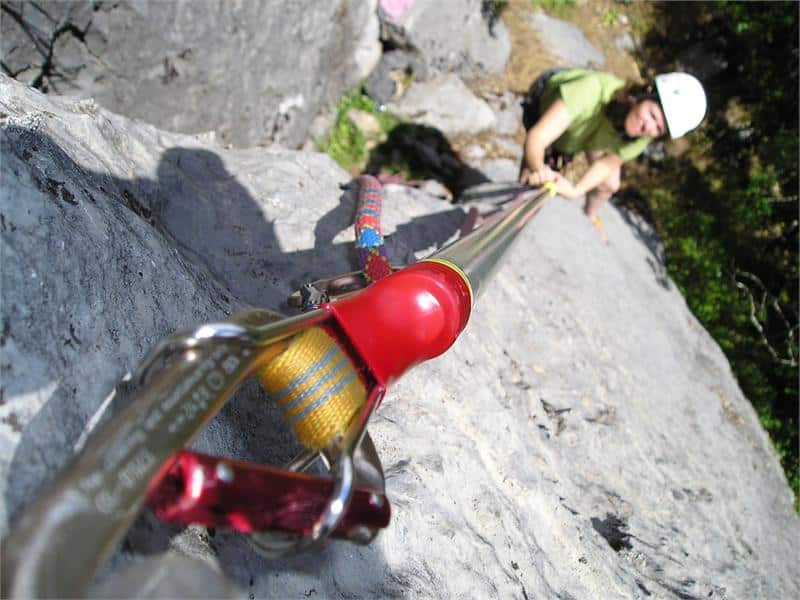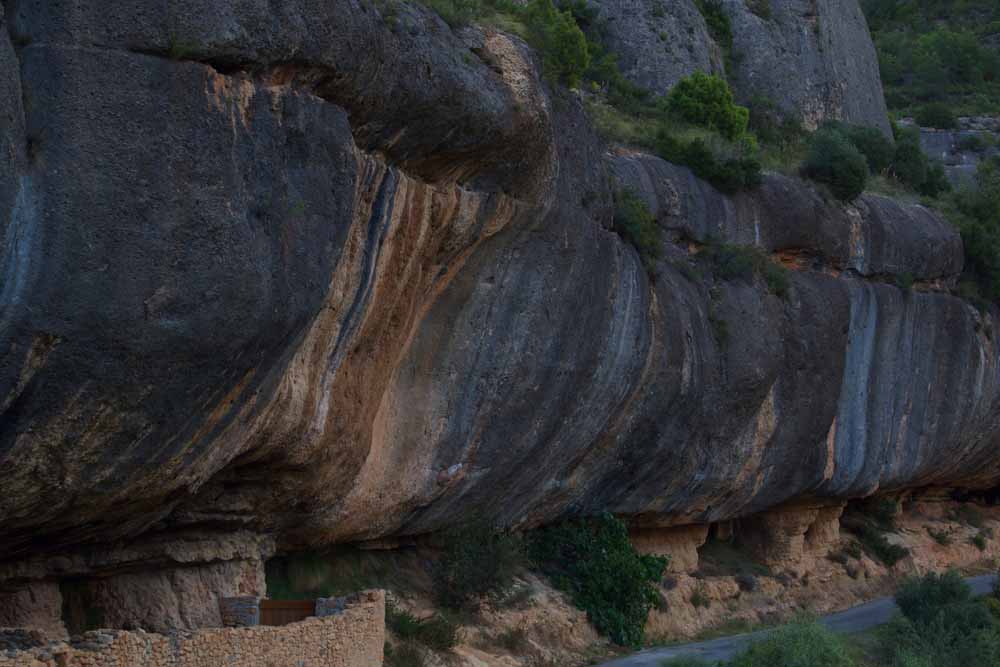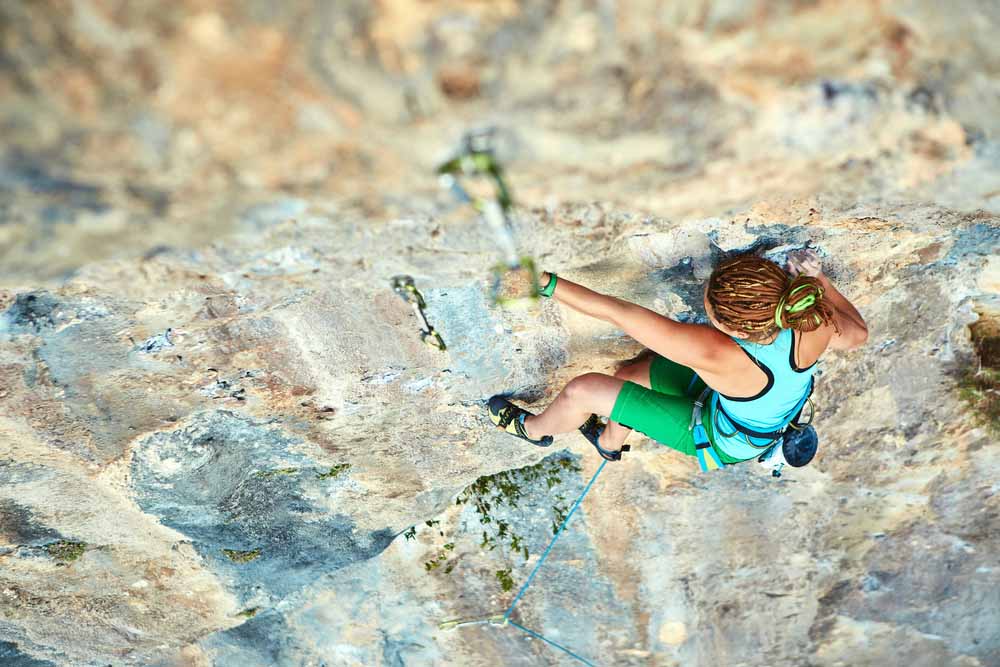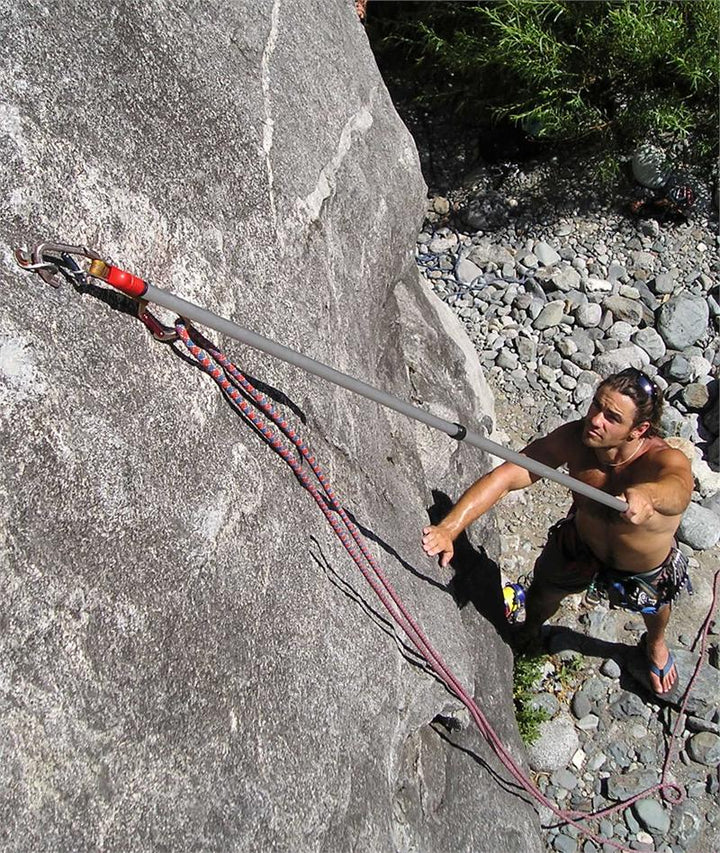Rock climbing is a risky sport, especially when considering disciplines like bouldering, where every fall is a ground fall, and hard traditional climbing, where death-defying runouts are commonplace. On the other hand– the outright dangers of sport climbing pale in comparison, especially when you consider the quantity of and strength of properly installed protection bolts and anchors on modern sport climbs.
That’s not to say that sport climbing is 100% safe. It’s not– it’s dangerous. However, when compared to other climbing disciplines, it is less risky. And the usage of clipsticks further mitigates that risk.
Keep reading to learn about why clipsticks are popular for sport climbing– this just might be the article that convinces you to add a clipstick to your sport climbing kit.
What are Clipsticks?
Clipsticks, also known as stick clips, are telescopic poles equipped with special hardware that allow you to clip and unclip quickdraws to and from bolts.
Back in the day, clipsticks were homemade. The typical design combined a painter’s pole with a metal hand clamp. You’ll still see some of these old-school clipsticks at the crag because it’s the cheapest way to make one.
But nowadays, there are numerous specialty products you can purchase, from simple add-on attachments you screw onto a traditional painter’s pole, to all-in-one purpose-built clipsticks.
The Clipstick and Modern Sport Climbing
For better or for worse, clipsticks have become an integral tool for modern sport climbers. So much so that almost every pair of climbers at the sport crag will have one. In addition, there may even be clipsticks strategically left behind at the crag for anyone to use.
That’s because there has been a recent movement in most popular sport climbing destinations to make the discipline as safe as possible. For example, trail crews improve trail networks and belay stances, and local climbing organizations replace outdated bolts and old anchor configurations designed for rappelling with modern hardware designed for lowering.
Using a clipstick is another tool in the modern sport climbing meta that helps climbers mitigate a little more risk while they are out at the crag enjoying a day of sport climbing.
What are Clipsticks Used For?
Clipsticks are used at the crag for a variety of reasons. However, the three primary reasons for using a clipstick are– pre-clipping the first bolt, aiding through the crux sequence, and bailing.
Pre-Clipping the First Bolt
Before clipsticks, climbers would have to lead climb the bottom of a route until they could reach the first bolt to clip their first quickdraw. Nowadays, many sport climbers prefer to pre-clip the first quickdraw from the ground using a clipstick–effectively allowing the climber to begin the route on top rope until they pass the first clipped bolt and begin lead climbing.
There are four main reasons climbers choose to pre-clip the first bolt from the ground instead of lead climbing off the ground.
Intentionally High First Bolt
There are many crags worldwide where the first bolts are placed very high off the ground. This may be the case for multiple reasons.
- Routes require fewer bolts when the first bolt is placed high off the ground.
- The rock at the bottom of the climb is not high-quality enough to have a bolt drilled.
- The climbing is “easy” and does not require bolted protection.
- The climbing can be adequately protected with trad gear and does not require bolts.
In terms of modern sport crags, high first bolts are common because the usage of clipsticks is expected. On a route with a high first bolt that can be pre-clipped from the ground and that has safe bolting above the first, you can drastically mitigate the chances of hitting the deck.
Land Erosion
As sport climbing has gotten more popular all around the globe, certain crags have begun to experience land erosion around the bases of the cliff because more people are climbing. Land erosion occurs from people walking, standing, pulling rope bags, wind, and rainfall– practically anything that displaces the soil around the base of the cliff.
Land erosion is particularly a problem at cliffs where the base of the wall is not on flat ground or is not reinforced with retaining walls.
Land erosion impacts the bottoms of routes and how climbers step off the ground and onto the wall. In some cases, severe land erosion can add multiple feet of climbing. Therefore, the distance from the ground to the first bolt becomes more run out.
By pre-clipping the first bolt on routes affected by land erosion, you can eliminate the runout and mitigate the risk of a bad ground fall.
Hard Climbing with a Low Crux
It’s not entirely uncommon for the hardest climbing of a route to come at the bottom instead of somewhere near the middle or the top. When that is the case, many climbers will choose to pre-clip the first bolt from the ground. Depending on the route, it may even make sense to pre-clip the first two bolts.
By pre-clipping from the ground, the climber is better protected through the hard sequence. A fall would still be somewhat awkward and uncomfortable, however, the risk of a complete ground fall is mitigated.
Pre-clipping the first or second bolt on a route with a low crux almost eliminates the need to stop and clip. This allows you to focus more on the movement and not have to worry about the dangers that come with clipping a quickdraw and pulling up the rope to clip it in the middle of a crux.
Exposed Belay Stance
One of the beauties of sport climbing is that you get to hang around the bottom of a beautiful cliff and belay from comfortable flat ground. However, that is not always the case.
Due to the nature of some sport crags, the belay stances may be exposed. For example, the ground may be off-camber and sloping away from the base of the cliff at an awkward angle. Or the terrain has many ledges or a cliff edge, and there is the risk of falling off the belay stance.
When a belay stance is exposed, pre-clipping the first bolt better protects the climber and the belayer. With at least one bolt clipped in between the climber and the belayer, the risk of either person falling off the exposed stance is mitigated.
Aiding Through the Crux
The second primary reason to use a clipstick is to aid climb through the crux.
Aiding through the crux can be pre-planned and done intentionally. This is when a climber wants to project a route with hard climbing. Using a clipstick to aid themselves in clipping bolts, a climber can try the moves of their project on top rope. By doing this, they do not have to worry about stopping to clip quickdraws or, worse, taking big whippers.
Then, once they have the moves rehearsed, they may choose to lead the climb, clipping all the bolts themselves.
Aiding through the crux of a sport climb can also be done unintentionally. This is often the case when a climber gets to a crux sequence that they cannot complete. This brings us to the third reason you might use a clipstick on a sport climb.
Bailing on a Sport Climb
In a perfect world, we all send our projects and never get shut down. However, in the real world, we sometimes get 100% shut down and find ourselves incapable of completing a climb.
When this happens, and you’ve spent the better part of an hour hanging on the rope, falling and trying desperately to climb through the crux, it may become time to bail.
Therefore, the third primary reason for using a clipstick is for bailing. When you bail on a sport climb using a clipstick, you have two options– you can either bail upwards or downwards.
Bailing Upwards
Bailing upwards on a sport climb involves using a clipstick to clip the remaining bolts of the climb until you reach the anchors.
By clipping the remaining bolts on a route one by one, you can effectively set up a top rope for yourself. Then, with the assistance of the rope and your belayer, you can jug up the route until you reach the anchors. Then, when you reach the anchors, you can get lowered and clean the quickdraws off the climb.
Bailing Downwards
Depending on the scenario, it may make more sense to bail downward. Bailing downwards on a sport climb involves reversing the process of bailing upwards.
When you bail downwards, you can downclimb or get lowered to the next bolt below you. From there, you can use a clipstick to remove the quickdraw from your highpoint and continue downwards, repeating the process.
Whatever the case, I want to mention that bailing upwards or downwards using a clipstick can be risky. It requires certain skills, a specific sequence of steps, and good communication between the climber and the belayer to perform it adequately, all of which are beyond the scope of this particular article.
In general, bailing on a sport climb should be avoided at all costs. And if you do need to bail, it may be best to just get lowered from your highpoint, abandoning the quickdraw and cleaning all the remaining quickdraws below it.
Tips for Using a Clipstick
- When pre-clipping bolts from the ground, make sure you have the rope properly clipped in the quickdraw so as to not accidentally back clip yourself.
- You can use your stick clip to pull down the rope in between the first and second bolts so that when the rope falls, the first bolt remains clipped for the next climber.
- Understand the capacities of your stick clip– there are many different types and designs, some of which are easier to use than others.
- Clipsticking is a skill that needs to be practiced. Practice with your clipstick before you attempt to use it in more advanced scenarios or under pressure, for example, when you need to bail.
- Forgot your clipstick in the car? With a little ingenuity, you can make a clipstick at the crag with a stick and a small stone.
My Opinion About the Usage of Clipsticks
I must admit- when I first started sport climbing, I disagreed with clipsticks. I argued that if someone could not safely and confidently climb the entirety of a route and clip every bolt themselves, they should not be on the climb.
However, since then, my perspective has shifted. I think differently about clipsticks and sport climbing now because my climbing repertoire has vastly expanded.
In particular, I trad climb more than I sport climb. I also have a greater propensity for larger and scarier objectives in bigger mountains. Therefore, I spend a lot more of my time runout above my gear.
So, nowadays, when I go sport climbing, I want it to feel casual and less risky. Now, I have no problem pre-clipping bolts to mitigate the risks associated with exposed belay stances and ground falls.
Ultimately, whether you choose to use a clipstick depends entirely on you- it’s a personal decision. I won’t judge you either way, and neither should anyone else.
Final Thoughts– Make Sport Climbing as Safe as Possible
When clipsticks were first becoming popular, they were called “cheater sticks,” the climbers who used them were called “soft,” and the climbs people were putting up were discounted because they pre-clipped the first bolt.
However, since then, a lot has changed. Clipsticks have become an acceptable part of the modern sport climbing ethic. Now, climbers use clipsticks to pre-clip bolts, aid through cruxes on their projects, and bail when they get in over their heads or when the clouds open up, dumping a torrential downpour of rain.
Overall, clipsticks and the climbers who use them are more commonplace than ever. I, for one, think that’s a good thing. So grab yourself a clipstick and do your double checks to make sport climbing a little less risky.


